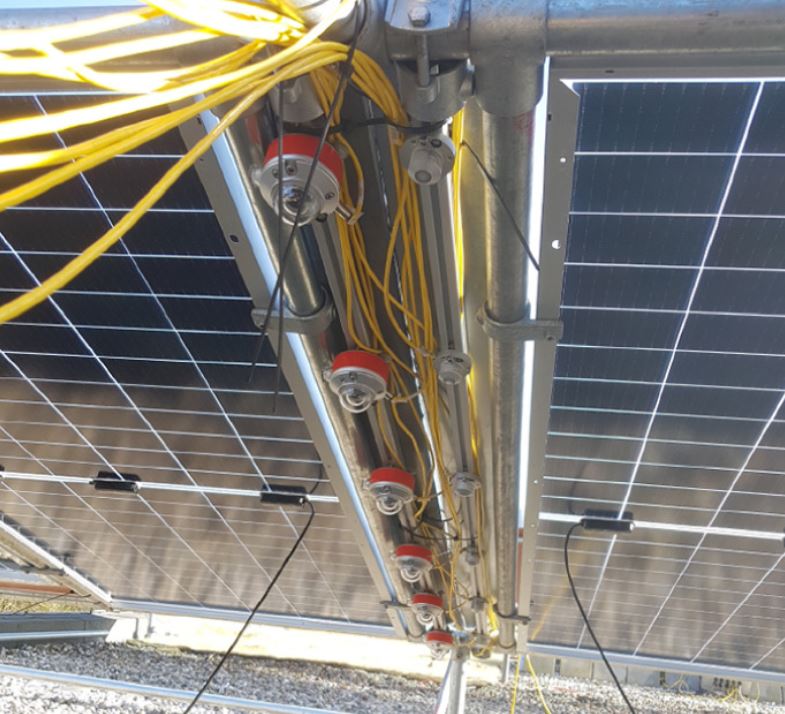A group of researchers from the Netherlands' Delft University of Technology (TU Delft) and Dutch solar radiation measurement company Kipp&Zonen have proposed a novel methodology to simulate the performance of bifacial vertical PV installations with an east-west orientation.
In the study “Modelling of bifacial photovoltaic farms to evaluate the profitability of east/west vertical configuration,” published in Solar Energy, the scientists explained that the proposed approach offers the advantage of enabling large scale simulations that take into account key factors such as non-uniformity of the rear irradiance and spectral impact.
“The non-uniformity of the irradiance and the spectral impact are considered by using a four-dimensional matrix as the base unit to perform annual farm simulation,” they said. “The first and the second dimensions represent spatial irradiance distributions along farm rows and modules’ cells, respectively, whereas the third and fourth refer to the time and sunlight wavelength.”
The model is also said to rely on a matrix structure that offers different design parameters for each row and makes it possible to consider different “unconventional” configurations. It calculates the irradiance for every wavelength of the spectrum at the cell level. For measuring the total irradiance on both sides of module, it considers sky irradiance, ground-reflected irradiance, and irradiance reflected by neighboring modules.
Furthermore, the new methodology estimates the irradiance incident on the ground by calculating the sky view factor. To predict solar module temperatures it uses a thermal model analyzing data for the selected locations and computational time restrictions.
The proposed method was validated by the researchers under different market scenarios and installation conditions and the performance of east-west vertical bifacial systems was compared to that of identical systems but south-oriented. They found that east-west installations may outperform their south-oriented counterparts depending on factors such as design parameters, curtailment, location and market conditions.
“Larger row-to-row distance values increase the energy yield and the revenues of both vertical and tilted PV farms up to a saturation value,” they also explained. “However, the impact of this parameter is higher for the former case hence an increase in the row-to-row distance fosters the profitability of east-west vertical over south-tilted configurations.”
Looking forward, the academics said the new method should include albedo and mounting system analysis, as well as offer the option of investigating projects with battery storage. “To further improve the computational speed of the algorithm, the necessity of extending the dimensions of problem to consider effects like non-uniformity of the irradiance could be replaced by empirical coefficients,” they added. “Their dependence on design and meteorological parameters could be investigated through machine learning techniques.”
This content is protected by copyright and may not be reused. If you want to cooperate with us and would like to reuse some of our content, please contact: editors@pv-magazine.com.




1 comment
By submitting this form you agree to pv magazine using your data for the purposes of publishing your comment.
Your personal data will only be disclosed or otherwise transmitted to third parties for the purposes of spam filtering or if this is necessary for technical maintenance of the website. Any other transfer to third parties will not take place unless this is justified on the basis of applicable data protection regulations or if pv magazine is legally obliged to do so.
You may revoke this consent at any time with effect for the future, in which case your personal data will be deleted immediately. Otherwise, your data will be deleted if pv magazine has processed your request or the purpose of data storage is fulfilled.
Further information on data privacy can be found in our Data Protection Policy.